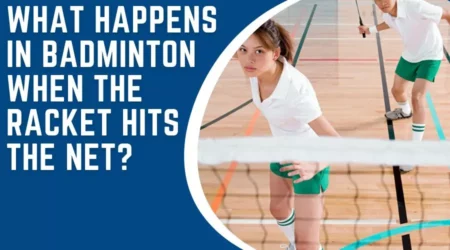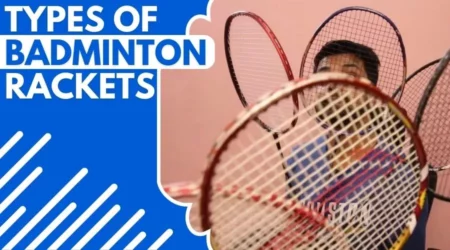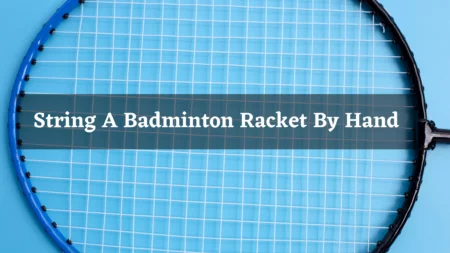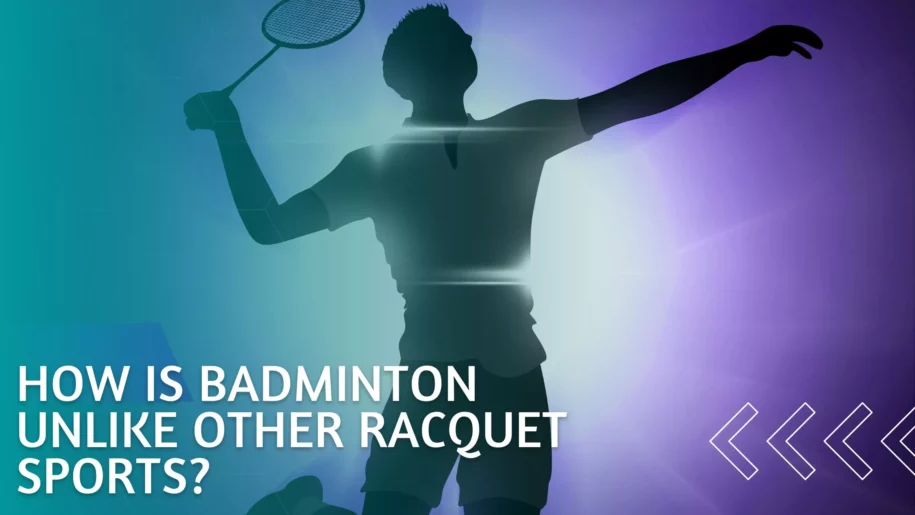
Badminton is the fastest racquet sport played by two opposing players.
Each player uses a racquet to strike a ball and must strike the bird or shuttlecock back and forth until one of them fails to return it.
The game has some similarities with tennis but also many differences.
Reducing friction between strings and racquet shafts helps maintain their shape for longer.
In Badminton, the shaft is shorter and stiffer than in other racquet sports, with less curvature.
This makes it harder for junior players to take big swings with their racquets and increases the effectiveness of smaller swing angles.
For example, in squash, players rarely take full-blown backhand shots because swinging that way opens up the body for an easy forehand shot from the opponent.
But in Badminton, you’re not giving your opponent an open shot if you hit a backhand since your racquet is much shorter and curved than theirs.
This means you can use a backhand without opening yourself up to get whacked by your opponent’s forehand on the other side of your body!
How Is Badminton Different From Other Racquet Sports?
The best way to determine how Badminton is different from other racquet sports is to compare each game’s rules and scoring systems.
These are the most important differences: – The net in Badminton is lower than in other racquet sports. In Badminton, it’s just high enough so that the shuttlecock can pass underneath it but not high enough for a player to touch the net with his racquet.

While this may seem minor, it has a massive impact on the game. Badminton nets are low to encourage aggressive net play and prevent long rallies, so the game is much less about strategy and more about quick reflexes and reading your opponent. –
Badminton is played to 11 points, not 15 or 21 like in tennis. This means that badminton games are shorter and usually last under 20 minutes, so players don’t get as tired and crampy as they would playing tennis.
What Exactly Does A Badminton Racquet Do?
A badminton racquet is a very sophisticated piece of equipment. It is responsible for catching, holding and releasing the shuttlecock and acts as a springboard for it to be propelled back over the net.
Together, the racquet and shuttlecock act as one unit. The player’s job is to manage the energy stored in the racquet and release it at the right time.
The shape of a badminton racquet is similar to that of a tennis racquet but quite different from that of a squash racquet.
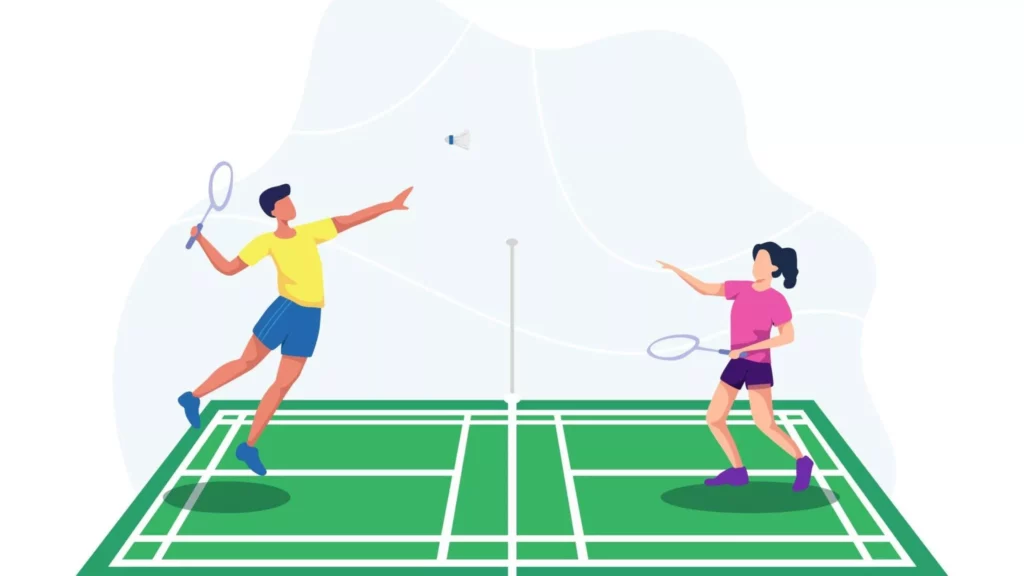
Badminton racquets are usually much shorter and have a giant head, which makes them easier to swing and more forgiving for beginners.
Badminton racquets have a larger frame and are strung more loosely than squash racquets.
The frame is the new tournament structure surrounding the string bed and the part of the racquet you hold in your hand.
The string bed is the area where the strings are wound around an underlying frame and is the part of the racquet that hits the shuttlecock.
Movement Of Badminton Racquet
Badminton racquets are shorter and less curved than tennis racquets and squash racquets. This makes it harder to produce power but easier to defend.
Badminton racquets also have larger heads than tennis racquets, which makes them heavier and easier to control.
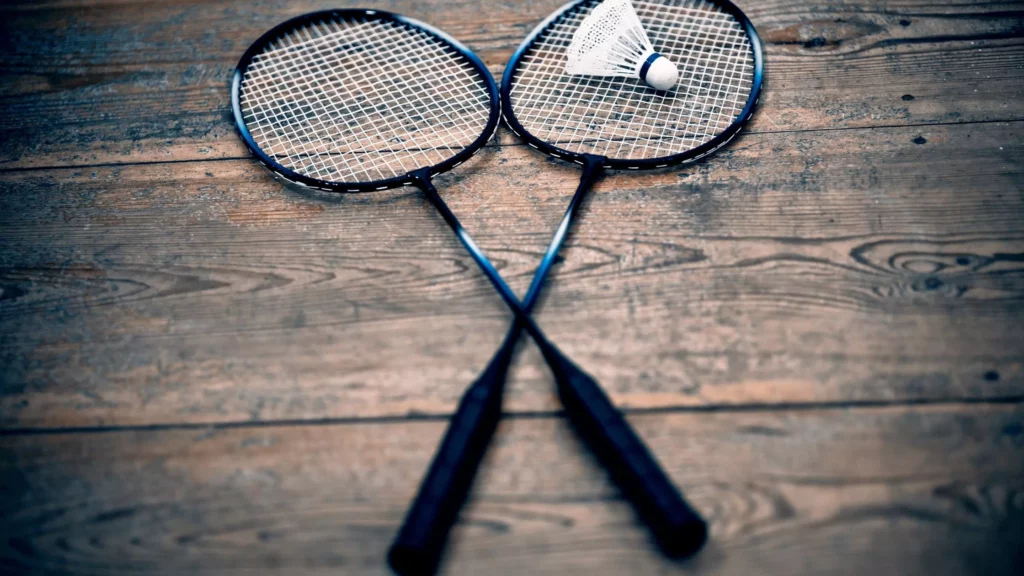
This is another reason why racquets don’t move as fast in Badminton.
Badminton racquets are shorter than squash racquets, which makes the racquets easier to control and defend. Compared to tennis racquets, badminton racquets are heavier and more significant.
Types Of Shots In Badminton
The regular shots in Badminton are forehand and backhand shots, but there are also powerful smash shots and delicate drop shots.
Basic Shots Of Badminton Racquet
Smash Shots Of Badminton Racquet
Serves In Badmrowing Racquet
Defense In Badminton Racquet
The backhand shot is critical in Badminton. Backhand shots are used to defend against powerful attempts.
What Are The Difference Between Badminton And Other Sports?
Differences Between Men’s And Women’s Games
The games are almost identical aside from two differences: The court dimensions and the weight of the shuttlecock.
The court dimensions are similar, but the service lines differ. In a men’s game, the service line is 8 feet 8 inches (2.64 meters) from the net, while in a women’s game, it is 9 feet (2.74 meters).
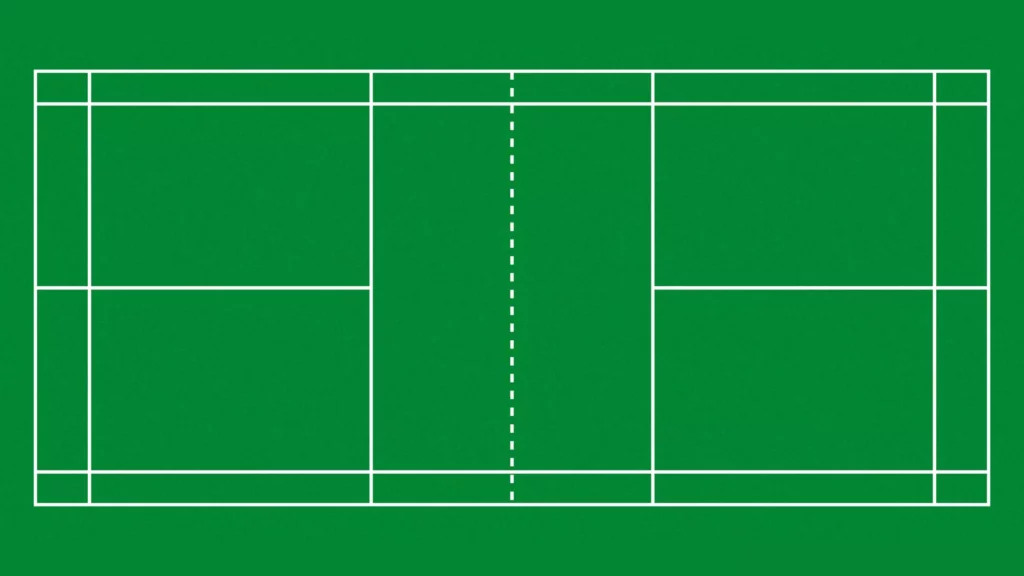
The weight of the shuttlecock is different in that a woman’s shuttlecock is lighter, 5.5 grams, vs a man’s, 8.5 grams.
The lighter weight helps the shuttlecock travel faster and allows female players to generate a faster smash than men.
Doubles And Singles Games
This is the same as the difference between men’s and women’s games, except that the rules are slightly different in doubles.
The net is lower (5 feet in the badminton doubles rules vs the 8 feet for a singles game), you have two internal and external rotations who serve every two points instead of everyone, and the game finishes after 13 instead of 21 points.
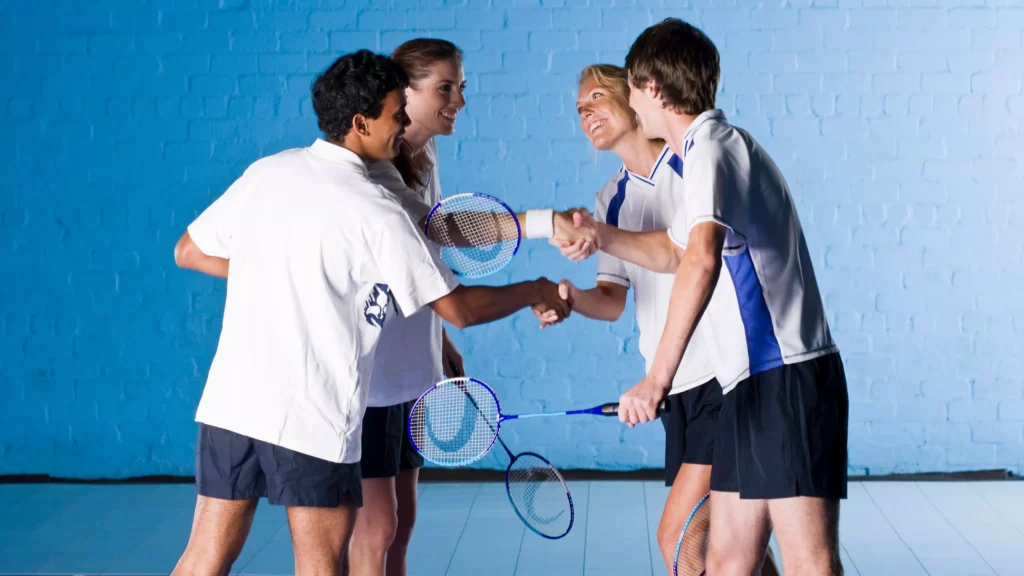
The differences between men’s and women’s doubles are that women play with a shorter net (4 feet instead of 5) and a lighter shuttlecock (4.5 grams instead of 8.5 grams).
Differences Between The Types Of Shots
Scoring points can only win Badminton games, and points can only be achieved if the shuttlecock lands inside the lines of the opponent’s badminton court. If the shuttlecock is outside the court, it is called a “let” or “dead”, and no points can be scored. When a shuttlecock goes long, it is possible to play it off the board and still be awarded a point.
Strategy
The strategy of Badminton is simple: hit the shuttlecock over the net and into your opponent’s court, and then hit it back over their head and into your badminton court.
The more shuttlecocks you can get over your opponent’s head and into your court, the more points you will score. There are two ways to do this:
Badminton Rules Are Different From Other Games.
In Badminton, players can hit the shuttlecock from any direction and any part of the court as long as one foot remains in contact with the floor.
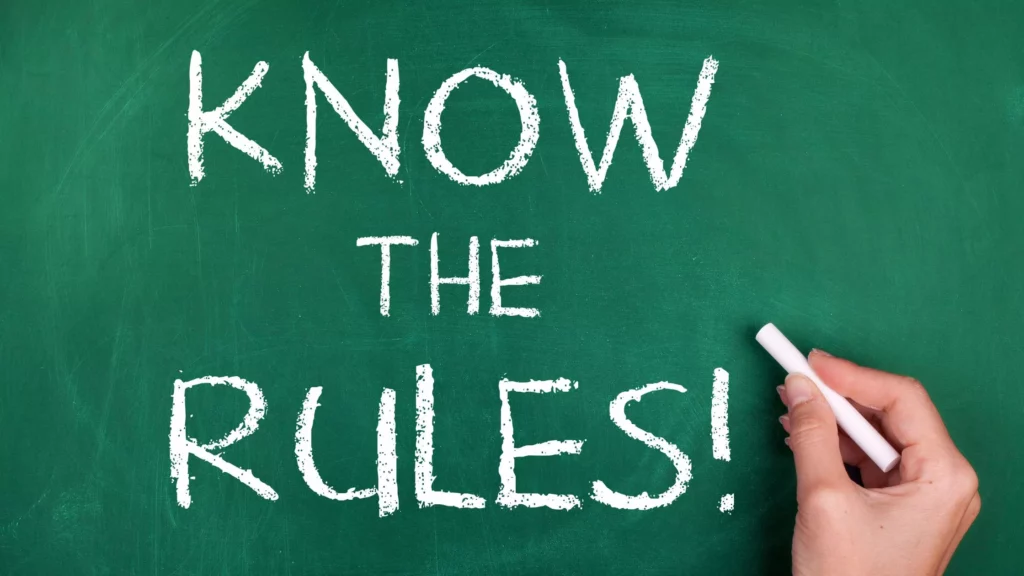
There are no other racquet sports where you get that much freedom to hit the ball from any part of the court. Badminton players can also jump in the air and smash the shuttlecock if they want to.
Other racquet sports require players to hit the ball while remaining grounded.
Equipment
The difference between badminton equipment and other racquet games is that badminton racquets are strung much looser than other racquet sports.
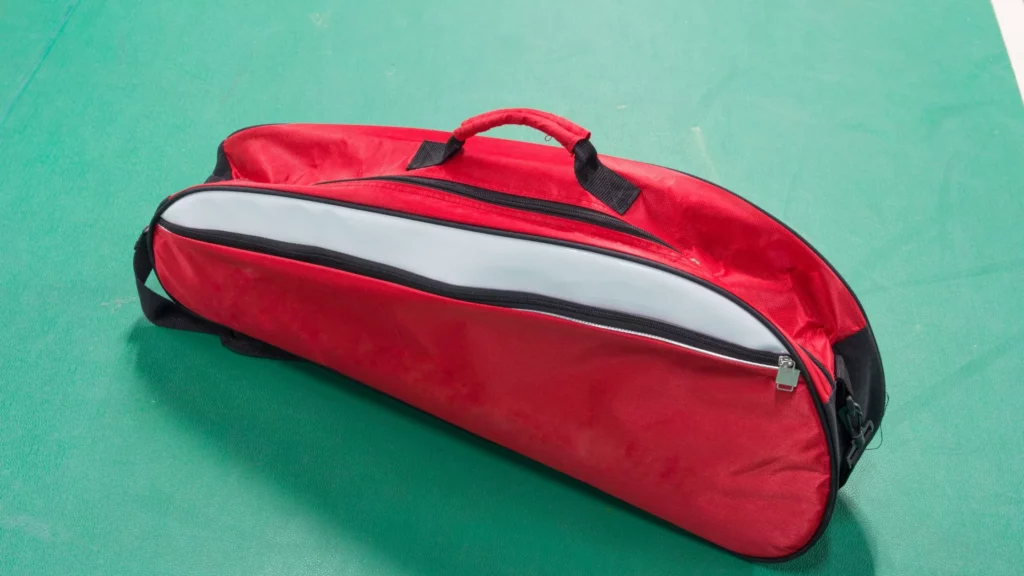
This allows the strings to stretch and store energy when the shuttlecock is struck and then release the power at the right time when the shuttlecock is hit back. Badminton racquets are also much shorter than other racquets.
The net is also lower in Badminton when compared to other racquet sports.
Competitions
The competition’s comparison is the number of games and points required to win the match. Some matches are played to 21 points, others to 15 points.

Badminton matches are played in groups of five, called “round robin”, where every player plays each other once. The top two players in each group advance to the next competition stage.
Basic Strokes
The basic strokes are the forehand, backhand, and smash. The basic strokes are all played with the forehand and backhand racquet.
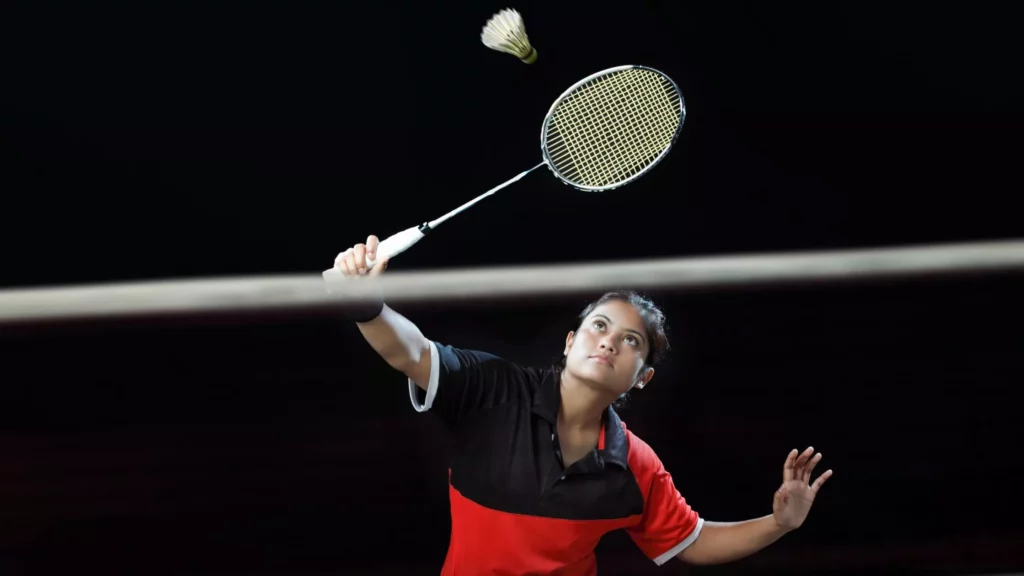
The smash is played with one hand on the racquet while the other hand is placed on the shaft above the racquet head. The smash hits high and deep shuttlecocks inside your opponent’s court.
Advanced Strokes
The advanced strokes are the drop shot, the net shot, and the drive shot. Advanced strokes are used when the shuttlecock is very low or close to the net.

They are played with the same racquet hand as the forehand and backhand, but the strokes are played with the racquet head closer to the player’s toes.
Various Shapes Of Racquets
- Shape
- Weight
- Length
- String type
- String tension
- Grip type
- Balance point
Conclusion
Badminton is a high-energy sport that requires lots of skill and coordination.
The players must be able to hit the shuttlecock just as it bounces off the floor.
This means the players must control their movements so that they don’t unintentionally bump into the walls or other players.
You also need to develop your reflexes and anticipation abilities so you can hit your shots before the shuttlecock hits the floor.
The best players have fast-twitch muscles and are remarkably limber. They can also move their bodies around the court quickly and with great agility.
However, this doesn’t mean anyone can make it to the game’s top. It takes years of training and dedication to become an elite player.
FAQS
What does a badminton racquet do?
A badminton racquet is very sophisticated equipment and a modern game. It is responsible for catching, holding, and releasing the shuttlecock and acts as a springboard for it to be propelled back over the net.
Together, the racquet and shuttlecock act as one unit.
What sport is Badminton most comparable to?
Most people would say that Badminton is most similar to tennis. Both sports involve hitting a ball over a net with a racket, and both are played on an entire court. However, there are some critical differences between the two sports. For one, Badminton is played with a much lighter ball, and the rackets are also smaller and lighter. Also, badminton rallies tend to be shorter than tennis rallies, as the ball cannot bounce on the ground.
How do you describe racket sports?
Racket sports are a category of sports that involve hitting a ball or other object with a racket. The most common racket sports are tennis, Badminton, and table tennis, but racket sports are played with racquets and balls, such as squash, paddle tennis, and platform tennis. Racket sports are often played outdoors but can also be played indoors.
What are the benefits of racquet sports?
Racquet sports offer several benefits, both physical and mental. Physically, racquet sports can improve coordination, balance, and agility, as well as increase muscle strength and cardiovascular endurance. Mentally, racquet sports can sharpen focus and concentration and help to develop strategic thinking skills. In addition, racquet sports can be a great way to socialize and meet new people.
Why is Badminton unlike other racquet sports
Badminton originates from a game called “shuttlecock”,; a racket sport played between two people using a feathered cork projectile that is hit back and forth with racquets. – Badminton is played on a rectangular court with a high net running across the middle. – Badminton is usually played outdoors on a concrete or synthetic surface, but it can also be played indoors on a synthetic court.
Related Article


